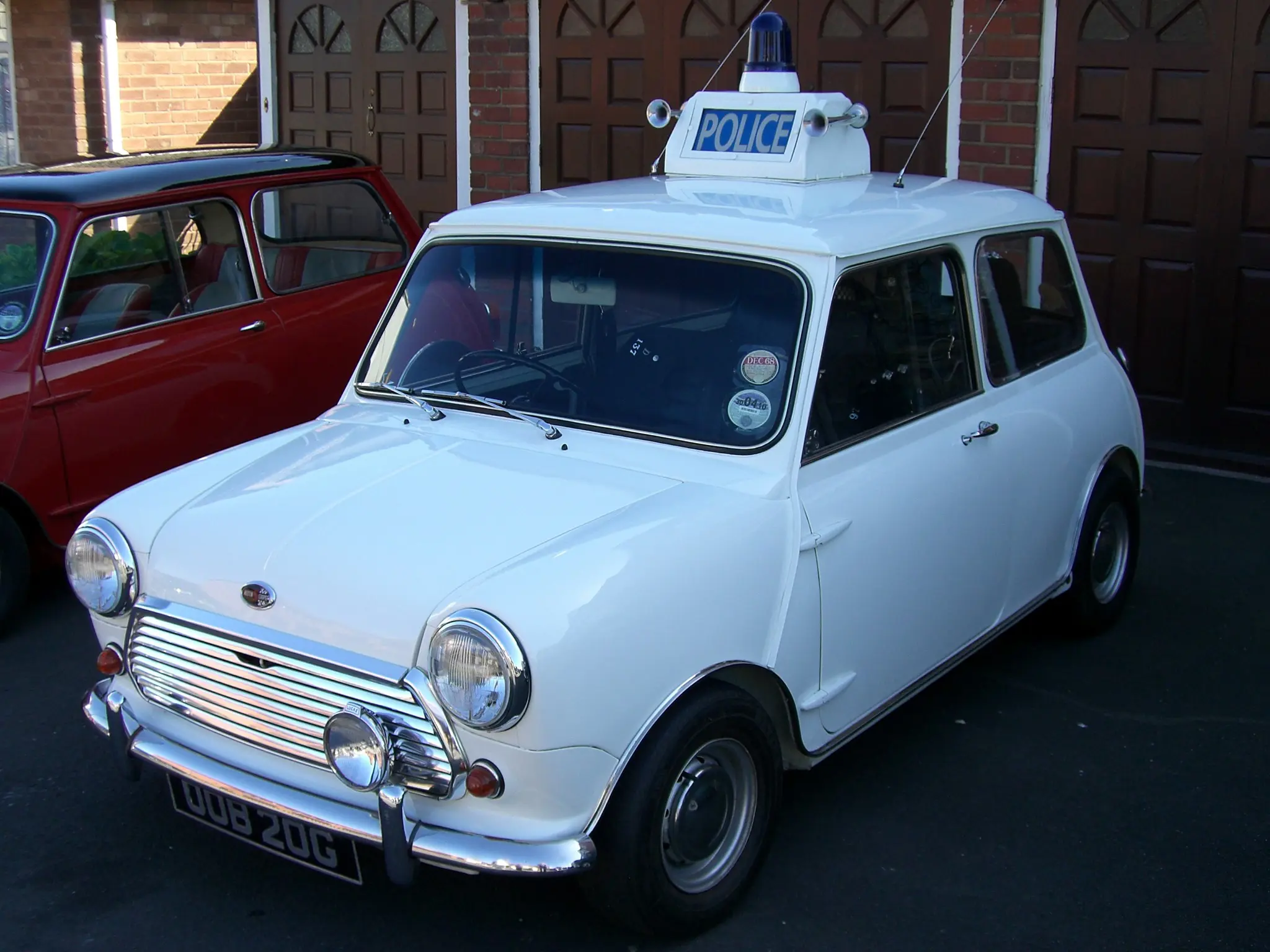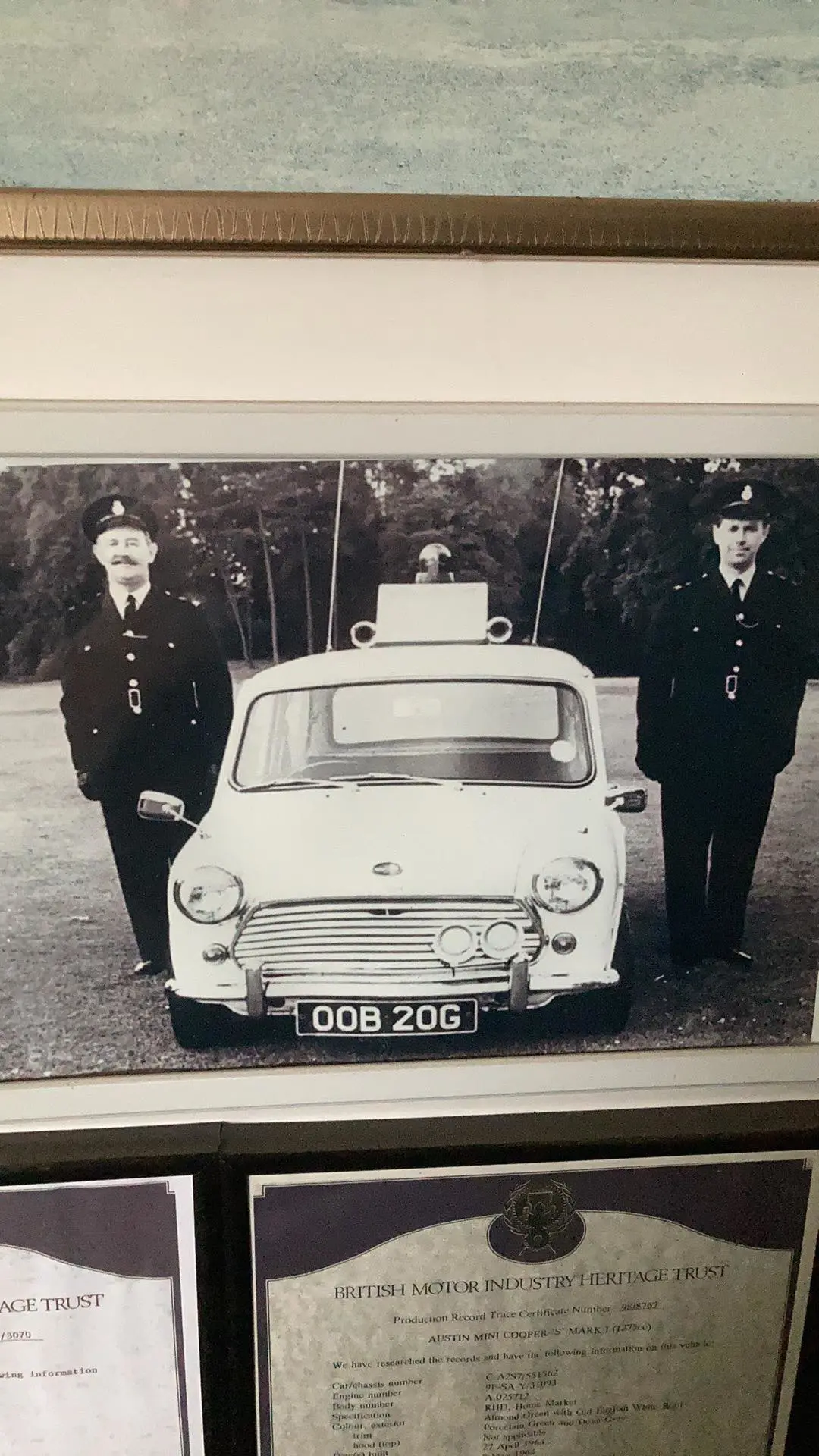MEET THE OWNER: EDWARD ARMSTRONG AND HIS POLICE AUSTIN MINI COOPER S MK. II
23 December 2021
There are those rare occasions when your rare and desirable classic turns out to be even rarer and more desirable than you first imagined. For example, 37 years ago, Edward acquired a 1969 Austin Mini Cooper S Mk. II in Tartan Red with a black roof, one that needed restoration. It sported this paint finish for five or six years, during which time it took part in shows in and around Birmingham. And it was at one of these events that a couple of PCs informed Mr. Armstrong that his Mini was an ex-police car.

At first, Edward was unsure whether the constables were joking, but he noticed the roof had developed cracks shortly afterwards. Removing the paintwork revealed telltale dents left from a roof box, for his Mini had indeed served in the former Birmingham City Police as a Traffic Car, doubtless flagging down many a speeding Ford Cortina GT driver.
The Cooper and Cooper S were popular choices as squad cars during the 1960s, serving with Ulster, Manchester, Lanarkshire, Essex, Pembroke County, Hampshire, West Yorkshire and Gateshead. Liverpool and & Bootle was the highest-profile user, while in August 1968, a pair of Coopers replaced Wolseley 6/110s at Hampton Traffic Garage. This represented a significant culture change for the London Met.
One reason for so many forces opting for the Cooper was its fuel bills compared with a 3 litre patrol car and its manoeuvrability. The Mk. II debuted in 1967, the same year as the introduction of the breathalyser, and the Mini proved more practical than an MGB Roadster or Sunbeam Tiger patrol car. In other words, they provided back seat accommodation for an often uncooperative occupant.

Birmingham appears to have commissioned their first fleet of the Cooper S in 1968. A press statement of the time noted, “These cars are specially fitted to police requirements, with two-way radios, flashing police signs, blue flashing beacons, air horns and a first aid kit”. Edward is keen to learn whether the force ordered only Austins (Liverpool, by contrast, favoured the Morris), and he believes his car served around the Park Lane area. It was decommissioned in 1971.
The return of the Armstrong Cooper S to its police specification took several years, as Edward wished to ensure its authenticity. There were items such as the roof box with its “Stop” sign to source plus various paraphernalia items. However, the space for the latter was quite limited as the PYE radio transmitter occupied most of the boot. As for performance, Mr. Armstrong was informed that he might be the custodian of a Birmingham police Mini with a specially tuned engine.
It virtually goes without saying that the Cooper S attracts not so much attention but amazement. Edward’s car is social history on wheels and a vital part of the Mini’s story. Not to mention a reminder of the time when such cars struck fear into errant motorists across the Aston region.
With Thanks To: Edward Armstrong
